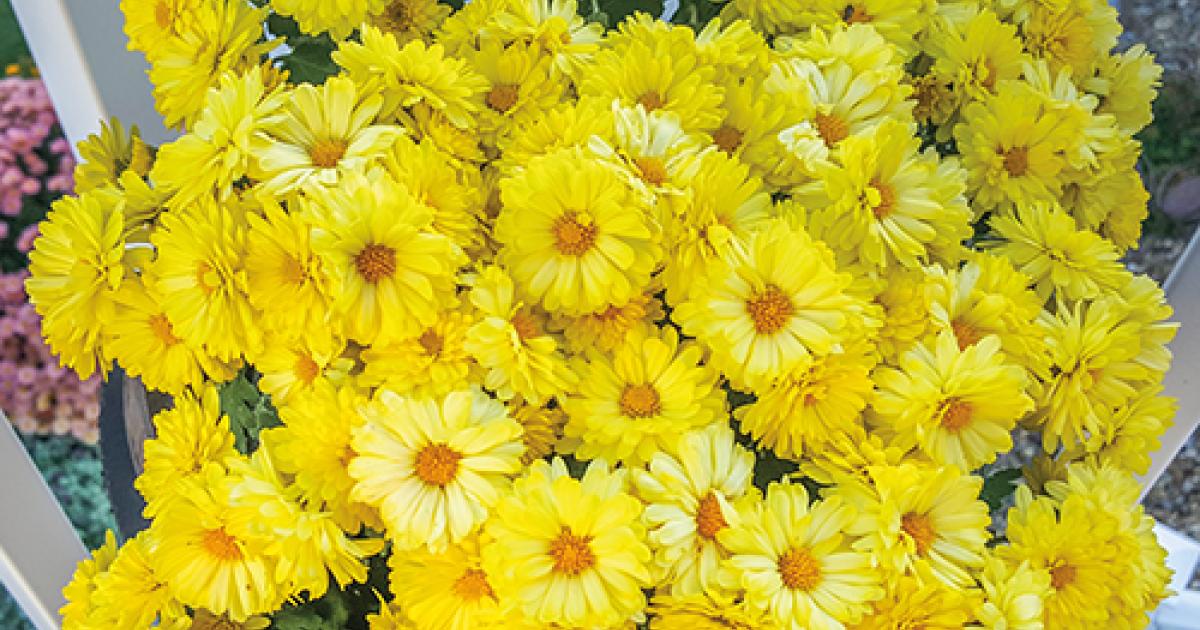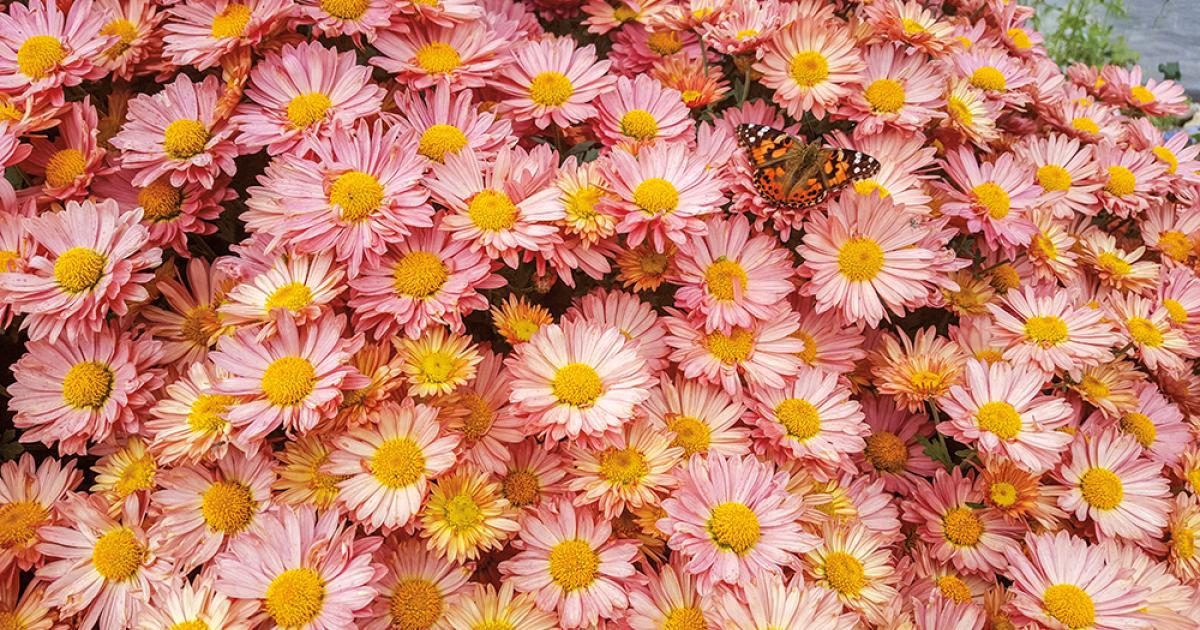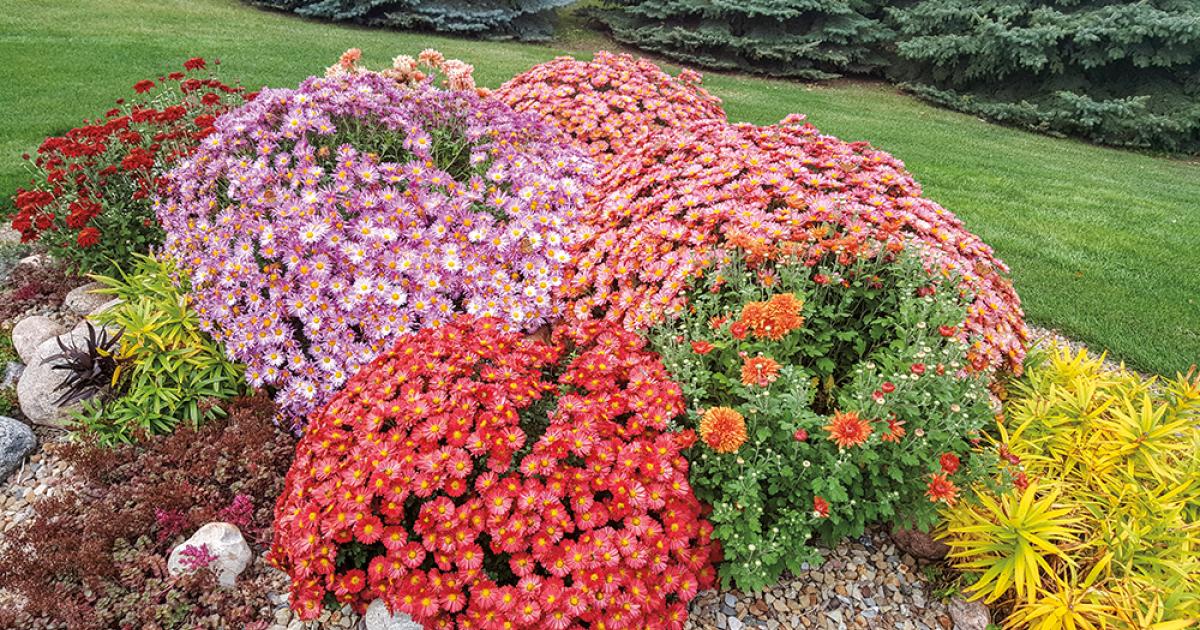Fall’s Flower Finale Begins in the Spring
You could call them nature’s fireworks. With bursts of gold, yellow, rust and burgundy, chrysanthemums, or “mums,” fill gardens with bountiful beauty each fall. And while potted versions last for a few weeks, plant them as a perennial in the spring to enjoy them for a few years.
Originating in Asia, mums are part of the daisy family. They come in a variety of novelty forms, too, but hardy garden mums, if planted, come back to visit on their own each year. Sometimes called mammoth mums, these mums produce underground shoots and stolons that help them survive as a perennial. It’s important to plant them in the spring, rather than mid-summer or fall, so they establish a solid root system.
Florist mums produce few or no stolons, causing them to die easily in the winter, especially in colder regions. When purchasing chrysanthemums, ask the seller if the plant is established as a perennial.
For northern climates like North Dakota, look for mums that have been propagated for planting in Zones 3 or 4, according to the U.S. Department of Agriculture Plant Hardiness Zone Map. (Visit www.planthardiness.ars.usda.gov(link is external) to find out which planting zone you live in.) Find the zone by looking at the tag usually stuck inside the plant’s pot. Often, hardier mum versions are found at garden centers versus hardware or grocery stores.
Planting and caring for mums
Mums like sun and well-drained soil in a place with less wind.
After they are in the ground, pinch off the top inch of the plant and apply a dose of fertilizer once a week, until around July 4. Let the plants grow for the rest of the summer, unfertilized, to form a full round mound that will produce plentiful flowers in the fall.
As winter approaches, the soil freezes and blooms fade, keep the plant intact and cover the base with hay, leaves or even dried grass. Leaving the large plant stems in the ground will trap snow and act as a blanket. Keeping the mums’ roots warm will improve their chances of coming back in the spring.
Every two to three years, divide the mums to keep them healthy, so they can continue to provide a plethora of color for as long as possible.
Clarice Kesler is communications manager for NDAREC and has been a passionate gardener for more than 30 years. The mums she loves were also a favorite of her late grandmother, Margaret Hoffman. Clarice and her husband, Bill, members of Mor-Gran-Sou Electric Cooperative, live near Mandan in a home flanked with the fall beauty of mums.
Botany buds
• In botany, stolons are horizontal branches from the base of a plant that produce new plants from buds at its tip or nodes.
• According to the National Chrysanthemum Society, mums are part of the daisy family and originated in Asia. They are described in writings as early as the 15th century B.C. As an herb, mums were believed to have the power of life.
• The National Chrysanthemum Society was incorporated as a nonprofit organization in 1954. It has members living in nearly all 50 states and many foreign countries.
• Look for hardy mums at your local greenhouse in the spring. If unavailable, try ordering through a northern grower, like Faribault Growers Inc., the home of “Mums from Minnesota.” A wholesale grower that also sells at the retail level, the company has been in business for over 70 years, and many of its chrysanthemums are University of Minnesota introductions. Ordering opens April 10. View its selection online at www.fgimn.com(link is external).













